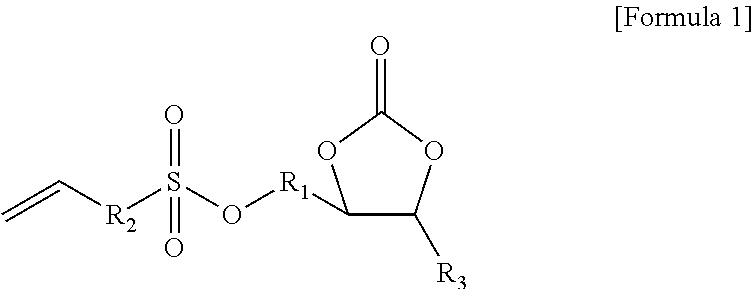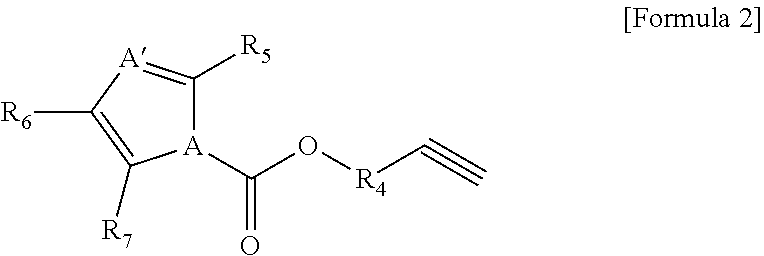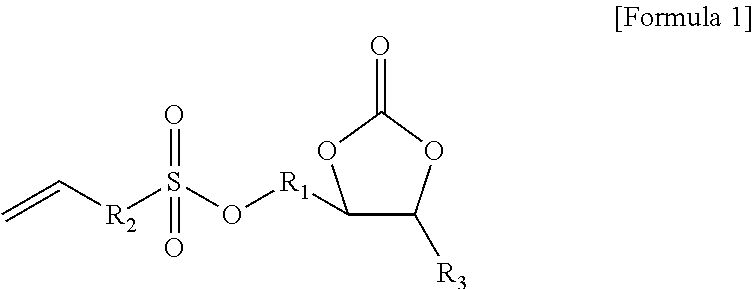Non-Aqueous Electrolyte Solution For Lithium Secondary Battery And Lithium Secondary Battery Including The Same
- Summary
- Abstract
- Description
- Claims
- Application Information
AI Technical Summary
Benefits of technology
Problems solved by technology
Method used
Image
Examples
example 1
[0138](Non-Aqueous Electrolyte Solution Preparation)
[0139]A non-aqueous organic solvent was prepared by mixing ethylene carbonate (EC) and ethyl methyl carbonate (EMC) in a volume ratio of 30:70 and dissolving LiPF6 in the mixture to have a concentration of 1.0 M. A non-aqueous electrolyte solution of the present invention was prepared by adding 0.01 g of the compound represented by Formula 1a and 0.01 g of the compound represented by Formula 2a (weight ratio of first additive:second additive=1:1) to 99.98 g of the non-aqueous organic solvent (see Table 1 below).
[0140](Electrode Preparation)
[0141]A positive electrode active material (Li(Ni0.6Mn0.2CO0.2)O2), a conductive agent (carbon black), and a binder (polyvinylidene fluoride) were added to N-methyl-2-pyrrolidone (NMP), as a solvent, at a weight ratio of 90:5:5 to prepare a positive electrode active material slurry (solid content of 50 wt %). A 100 μm thick positive electrode collector (Al thin film) was coated with the positive ...
example 2
[0145]A non-aqueous electrolyte solution of the present invention and a secondary battery including the same were prepared in the same manner as in Example 1 except that 0.1 g of the compound represented by Formula 1a and 0.1 g of the compound represented by Formula 2a (weight ratio of first additive:second additive=1:1) were added to 99.8 g of the non-aqueous organic solvent (see Table 1 below).
example 3
[0146]A non-aqueous electrolyte solution of the present invention and a secondary battery including the same were prepared in the same manner as in Example 1 except that 3.0 g of the compound represented by Formula 1a and 3.0 g of the compound represented by Formula 2a (weight ratio of first additive:second additive=1:1) were added to 94 g of the non-aqueous organic solvent (see Table 1 below).
PUM
 Login to View More
Login to View More Abstract
Description
Claims
Application Information
 Login to View More
Login to View More - R&D
- Intellectual Property
- Life Sciences
- Materials
- Tech Scout
- Unparalleled Data Quality
- Higher Quality Content
- 60% Fewer Hallucinations
Browse by: Latest US Patents, China's latest patents, Technical Efficacy Thesaurus, Application Domain, Technology Topic, Popular Technical Reports.
© 2025 PatSnap. All rights reserved.Legal|Privacy policy|Modern Slavery Act Transparency Statement|Sitemap|About US| Contact US: help@patsnap.com



